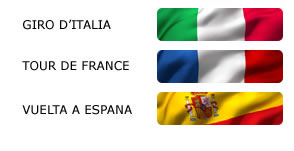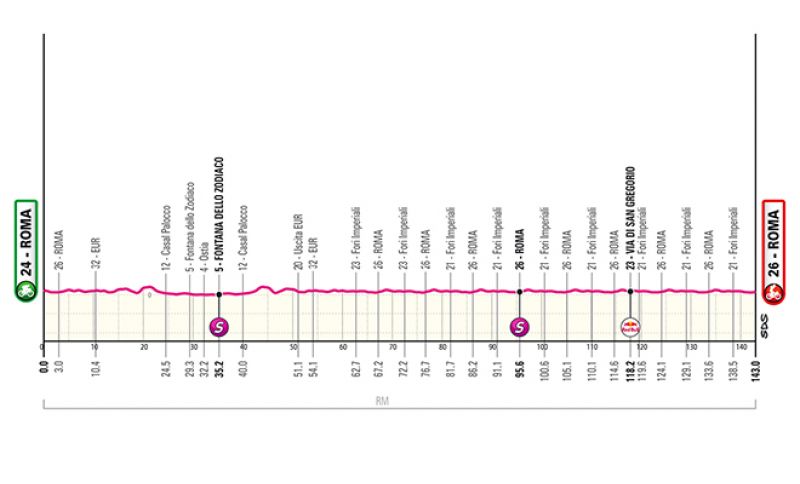

As has been the case for three years now, the Giro d'Italia concludes with the Rome-Rome, a 143-kilometer parade that today takes on truly special meanings.
to follow the stage live coverage starting at 3:10 PM CLICK HERE
Final stage divided into two parts: approach, from the start at Rome-EUR, until the first pass at the finish line reaching the coast and then Ostia, then returning to the starting area and subsequently a final circuit (8 laps) within the Capital. The 9.5 km circuit develops entirely along city streets (wide and sometimes with some traffic dividers). Short undulations and long straightaways connected by sometimes challenging curves alternate. The road surface is predominantly asphalt with some short cobblestone sections ("sanpietrini")
THE TERRITORY. For the third consecutive year, Rome is hosting the Giro d'Italia's grand finale. An additional recognition of the beauty of the Eternal City, which in this 2025 is at the center of global attention also due to the Jubilee that attracts hundreds of thousands of faithful from around the world.
It is impossible, therefore, to miss visiting St. Peter's Basilica, the religious heart of the city, and the adjacent Vatican Museums with their invaluable collection of artistic treasures and, especially, the Sistine Chapel, which has also recently been in the spotlight for hosting the conclave that elected Pope Leo XIV. To reach St. Peter's, moreover, a new road has been available for a few weeks: it is the Monte Ciocci-San Pietro cycle and pedestrian path, which allows crossing a particularly busy area of the city in absolute relaxation and safety.
And Pope Leo XIV will greet the race!
Before running under the stage to applaud the winners, one is pleasantly overwhelmed by the beauties of the Capital. Which are many, very many. It is difficult to choose where to start.
The Colosseum is the superstar of archaeological Rome, one cannot help but know it before going to the Imperial Forums, a unique architectural complex in the world composed of a series of monumental buildings and squares, the center of political activity of ancient Rome, built over a period of about 150 years, between 46 BC and 113 AD.
Subsequently are the Baths of Caracalla, one of the largest and best-preserved thermal complexes of antiquity, built on the Small Aventine between 212 and 216 AD, in an area adjacent to the initial stretch of the Appian Way. For the importance of its monuments, the latter was already defined in antiquity as Regina Viarum. One can walk or cycle along it, admiring some of the most notable monuments of Ancient Rome, including the Mausoleum of Cecilia Metella, the Catacombs of San Callisto, San Sebastiano and Domitilla, the Villa dei Quintili and the Circular Tomb of Casal Rotondo.
And how can one forget Castel Sant'Angelo, one of the most famous and visited monuments in Rome, also grazed by the riders? From its terraces or openings along the external walkways, one enjoys one of the most suggestive panoramas of the city.
Rome is not just monuments, but also green spaces of great beauty. Villa Borghese, the most famous park in the city, is the ideal place for a walk among gardens, fountains, and sculptures. Inside it is the Borghese Gallery, one of the most prestigious museums in the world, which houses works by Caravaggio, Raphael, Bernini, and Titian.
Less known, but of great importance, is the Archaeological Park of Ostia Antica, the second in Italy in extension (after Pompeii), which rises near the circuit that the riders will travel. This could be the ideal destination for those who want to discover an artistic pearl and at the same time watch the race pass without immersing themselves in the city's hustle and bustle. But in the Eternal City, whichever road is taken is always the right one.
